Arenosols
Table of contents
-
Introduction
-
Parent material and environment
-
Regional Distribution
-
Definition
-
Genesis
a. Formation in the dry zone
b. Formation in the wet (humid) tropics
-
Characteristics of Arenosols
a. Morphological characteristics
b. Physical characteristics
c. Chemical characteristics
-
Management and Use of Arenosols
1. Introduction
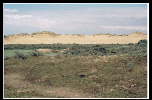 |
| Fig.1 Landscape with quartz-rich sands |
| (
Source: FAO, 2001.) |
-
The name Arenosol comes from the Latin word arena =
sand.
-
Arenosols belong to the Reference Soil Groups set #3 of the
of the WRB reference system. This set includes mineral soils whose formation is
conditioned by the particular properties of their parent material (World Soil
Resources Report 94, 2001).
-
Arenosols consist of sandy soils developed in
a. Residual sands, in situ after weathering of old, usually
quartz-rich soil material or rock
b. aeolian sands, i.e. recently deposited sands as occur in
deserts and beach land.
-
They are internationally known as:
-
Psamments, Psammaquents : Soil Taxonomy, USA
-
Red and yellow sands: Brazil
-
Podsolic soils: Australia
-
Classe des sols peu évolués: France
2. Parent material and environment
Parent material
-
Unconsolidated, in places calcareous, translocated
sand
-
Relatively small areas of Arenosols occur on residual
sandstone
Environment
-
Arenosols occur from arid to humid, from extremely cold to
extremely hot regions
 = azonal
soils = azonal
soils
-
Landforms vary from recent dunes, beach ridges and sandy
plains under scattered (mostly grassy) vegetation to very old plateaus under
light forest
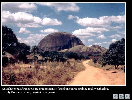 |
| Fig.2 Arenosol landscape, developed in
situ |
| (
Source: FAO, 2001.) |
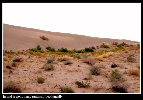 |
| Fig.3 Arenosol landscape developed
recently |
| (
Source: FAO, 2001.) |
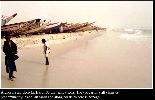 |
| Fig.4 Arenosol (Senegal) |
| (
Source: FAO, 2001.) |
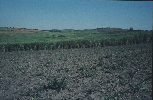 |
| Fig.5 Arenosol-landscape South
Africa |
| (
Source: ISRIC, NL.) |
3. Regional Distribution
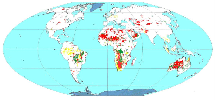 |
| Fig.6 Arenosols worldwide |
| (
Source: FAO, 2001.) |
-
Arenosols are among the most extensive soils in the world
covering about 900 Mio. ha or ~ 7 % of the land surface.
-
Vast expanses of deep aeolian sands are found on the central
African plateau between the Equator and 30o southern
latitude (Kalahari sands).
-
Other areas occur in the Sahelian region of Africa, in the
Sahara desert, the Middle East, China and central and western
Australia.
4. Definition
-
A texture, which is loamy sand or coarser to:
a. a depth of at least 100 cm from the soil surface,
or
b. To a plinthic, petroplinthic or salic horizon between 50
and 100 cm from the soil surface
-
< 35 % rock fragments or other coarse fragments
-
No other diagnostic horizons other than an ochric,
 |
| Fig.7 In the dry zone, an ochric A horizon is the
only diagnostic horizon. |
| (
Source: FAO, 2001.) |
yermic or albic horizon,
 |
| Fig.8 Albic Arenosol, South Africa |
| (
Source: ISRIC, NL.) |
or a plinthic, petroplinthic or salic horizon below
50 cm from the soil surface
 see LECTURE
NOTES ON THE MAJOR SOILS OF THE WORLD see LECTURE
NOTES ON THE MAJOR SOILS OF THE WORLD
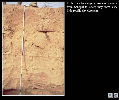 |
| Fig.9 Arenosols in the Sahelian
region |
| (
Source: FAO, 2001.) |
5. Genesis
-
The development of Arenosols differs between arid and humid
climates. Arenosols in the dry zone show minimal profile development
because
- Soil forming processes are at a standstill during long
periods of drought
- And/or because the parent material is of young age
-
Arenosols in the wet tropics are either formed in
- Young sand deposits of alluvial, lacustrine or aeolian
origin
- Or represent the ultimate in soil formation, i.e. prolonged
weathering of quartz-rich rocks (granite, sandstone and quartzite) and
constitute the thick albic E horizon of a Giant Podzol.
a. Formation in the dry
zone
-
Sandy parent material is abundant in areas where sand
accumulates after selective transportation of the weathering material by wind
[note: transportation by water is discussed under Fluvisols, set #4: Mineral
Soils conditioned by Topography).
-
Aeolian (wind-borne) sands are deposited by wind action,
either in dunes or in extensive sheets (cover sand areas)
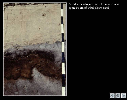 |
| Fig.10 Podzol under sand |
| (
Source: FAO, 2001.) |
-
During transport, selection of particles occurs; the wind
speed and the size, shape and density of the minerals determine how far a
particular grain will be transported.
-
This sorting of grains results in deposits that consist of
pure sand with a uniform particle size. Many aeolian sand deposits show
characteristic large-scale cross bedding, indicative of sand deposition on the
slip face of dunes
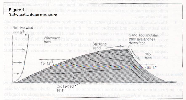 |
| Fig.11 Schematic dune structure |
| (
Source: FAO, 2001.) |
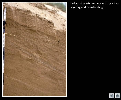 |
| Fig.12 Cross-bedding induced by aeolian sand
deposits |
| (
Source: FAO, 2001.) |
-
Soil formation in such dunes or cover sand areas is minimal
until the dune is colonized by vegetation (= fixed dune)
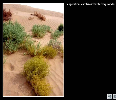 |
| Fig.13 Fixed dunes are formed when transported sand
settles in the lee of an obstacle such as brush or a piece of rock. It grows in
size and more sand settles, i.e. the dune grows. |
| (
Source: FAO, 2001.) |
-
Then, humus can accumulate in the surface soil and a shallow,
ochric surface horizon can develop
 |
| Fig.14 Minimal profile development (long dry
periods, low humus content and vegetation), e.g.. aridic Arenosols contain 0.2
% organic carbon. |
| (
Source: FAO, 2001.) |
-
Sand grains of Arenosols often have coatings:
-
Brownish through clay and carbonates
-
Reddish through hematite (
 ferrugination) -> relic
feature of more humid climate in the past ferrugination) -> relic
feature of more humid climate in the past
 |
| Fig.15 On grassland planted too late to Panicum
maximum, the first May storms beat down on the poorly covered soil and
separated the humus and clay from the coarse sand. Sheet runoff carried away
the light topsoil particles (coloured dark grey), leaving behind sheets of red
sand as evidence of eroded soil. ORSTOM Station, Adiopodoumé Côte d'Ivoire (5%
slope). |
| (
Source: www.fao.org/docrep/T1765E/ t1765e0j.htm) |
b. Formation in the wet tropics: residual sands
-
Residual sands are the result of prolonged weathering of
quartz-rich rocks such as granite, sandstone and quartzite. Extensive,
horizontal sandstone plateaux occur in tropical shield areas. Well-known
examples are:
a. Precambrian Roraima sandstone formations on the Guiana
Shield
b. Voltaian sandstone formations in Western Africa
-
These sandstone formations have a deep weathering mantle of
bleached, white sands (= color of quartz) that are rich in quartz, poor in clay
and excessively drained
 |
| Fig.16 Albic Arenosol, North Brazil |
| (
Source: Zech und Hintermaier-Erhard, 2002.) |
-
a thick albic E horizon is formed, in places over a dark
illuviation horizon at several meters depth, e.g. in Australia: E-horizon up to
13 m depth
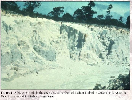 |
| Fig.17 In the humid zone: strongly developed
tropical Podzol with thick albic E eluviation horizon (200 cm) became excluded
from the group of Podzols -> are albic Arenosols (or Giant
Podzols). |
| (
Source: FAO, 2001.) |
-
If the underlying spodic horizon starts within 200 cm, the
soil is classified as Podzol but where the spodic horizon (Bhs, Bs) starts
deeper (beyond the taxonomic control section) the soil is classified as albic
Arenosol.
6a. Morphological characteristics
-
In the humid zone:
-
If the spodic horizon (Bs, Bhs) starts below 200 cm ->
albic Arenosols or Giant Podzol;
-
If the spodic horizon (eluvial horizon starts within 200
cm -> Podzol
 |
| Fig.18 Arenosols in the dry zone, i.e. recently deposited
aeolian sands have an ochric A over massive C-horizon: A(E)C. |
| (
Source: FAO, 2001.) |
6b. Hydrological and physical
characteristics
-
Arenosols have weak capillary transport due to prevailing
coarse sand texture.
-
Depending on the grain size distribution and organic matter
content, the available water storage may be as low as 3-4 %, in places it can
reach up to 15 – 17 %.
-
High infiltration (varies between 2.5 and 25 cm/hour), and
may be 250 times faster than in clay soils (0.01 – 0.1 cm/hour).
-
High
(
 bulk
density)
(BD; between 1.5 and 1.7) due to many large
pores. bulk
density)
(BD; between 1.5 and 1.7) due to many large
pores.
6c. Chemical characteristics
-
Most Arenosols in humid tropical regions are strongly leached
soils with a low nutrient content and a very tight nutrient cycling between
vegetation and surface soils (O-horizon and shallow A-horizon).
-
Arenosols in the dry regions are normally rich in bases. The
organic carbon content of most surface horizons are normally less than 0.5
%.
7. Land use and management
-
Arenosols in arid lands, where the annual rainfall sum is
less than 300 mm, are predominantly used for extensive grazing.
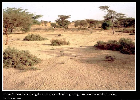 |
| Fig.19 Arenosols in Senegal (dry
season) |
| (
Source: FAO, 2001.) |
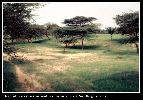 |
| Fig.20 Arenosols in Senegal (rainy
season) |
| (
Source: FAO, 2001.) |
However, overgrazing is an enormous problem
 |
| Fig.21 Uncontrolled grazing without soil
conservation measures destroyed much of the vegetation in the Sahelian zone of
the Senegal. Without vegetation, topsoil is eroded and the land becomes
infertile. |
| (
Source: Agency for International Development) |
-
Dry farming is possible where the annual rainfall sum exceeds
300 mm (300 to 600 mm).
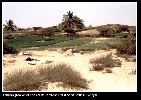 |
| Fig.22 Onions on coastal Arenosols |
| (
Source: FAO, 2001.) |
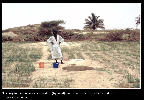 |
| Fig.23 Irrigation |
| (
Source: FAO, 2001.) |
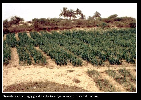 |
| Fig.24 Growth is surprisingly good thanks to a
regular supply of rabbit manure. |
| (
Source: FAO, 2001.) |
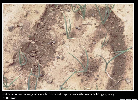 |
| Fig.25 Rabbit manure not only acts as a fertiliser
but improve also the water holding capacity of the soil. |
| (
Source: FAO, 2001.) |
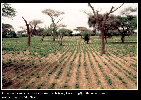 |
| Fig.26 Groundnut can be cultivated in
Arenosols |
| (
Source: FAO, 2001.) |
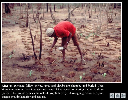 |
| Fig.27 Land use of Arenosols:
intercropping |
| (
Source: FAO, 2001.) |
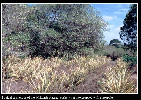 |
| Fig.28 Cash Crops |
| (
Source: FAO, 2001.) |
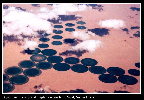 |
| Fig.29 Sugar cane on irrigatet Haplic Arenosols in
Natal, South-Africa. |
| (
Source: FAO, 2001.) |
Soil conservation is a prerequisite for sustainable
management
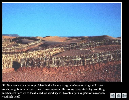 |
| Fig.30 Erosion control: barriers against shifting
sands |
| (
Source: FAO, 2001.) |
-
Albic Arenosols are best left under their natural vegetation.
As nutrient elements are all concentrated in the biomass and in the top 20 cm
of the soil, removal of the vegetation results in infertile
 badlands
without ecological or economic value. Permanent cultivation of annual crops
would require management inputs that are usually not economically justifiable. badlands
without ecological or economic value. Permanent cultivation of annual crops
would require management inputs that are usually not economically justifiable.
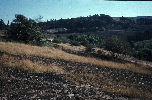 |
| Fig.31 Albic Arenosol, South Africa. |
| (
Source: ISRIC, NL.) |
|

 previous | next
previous | next

 previous | next
previous | next